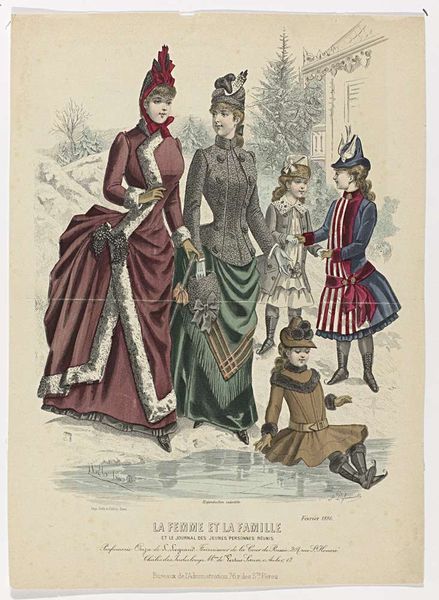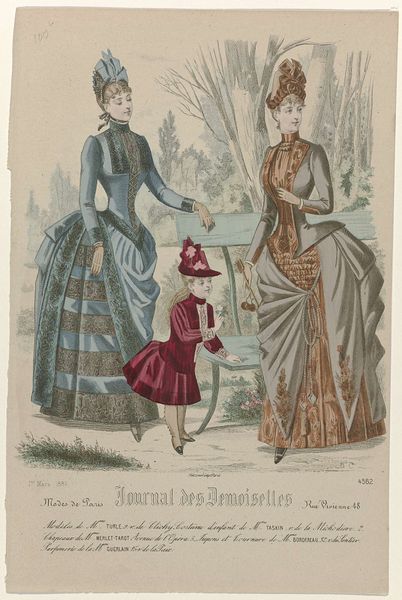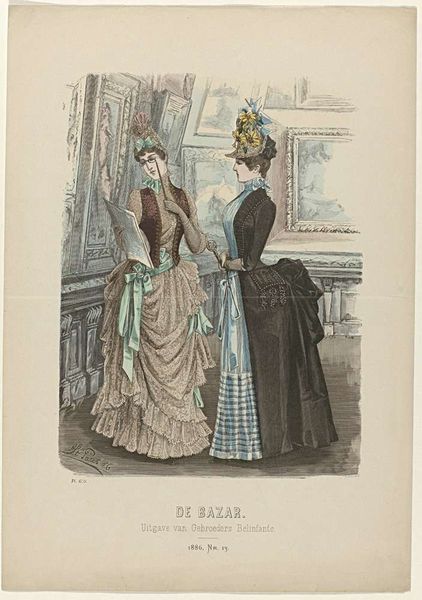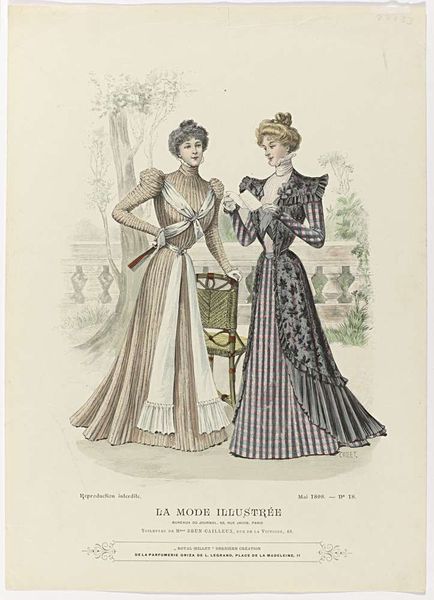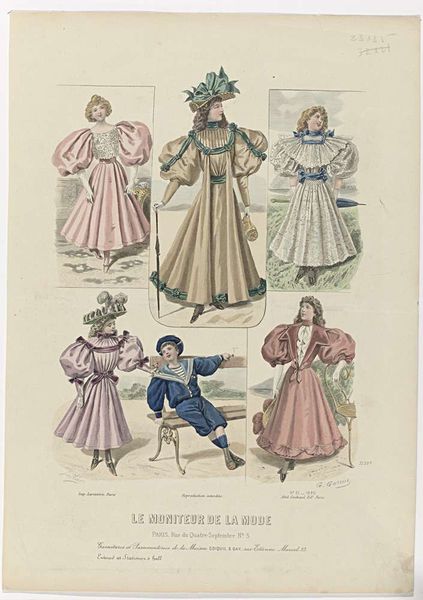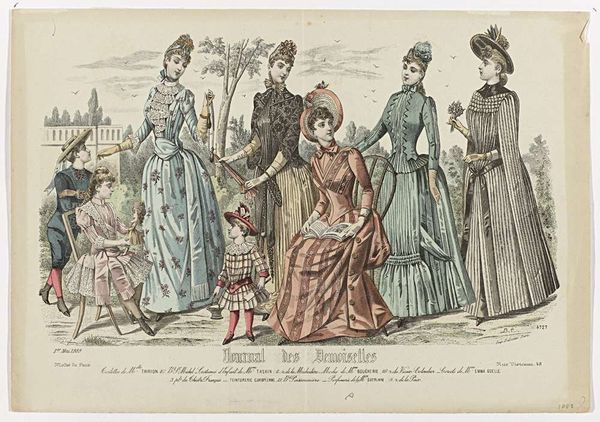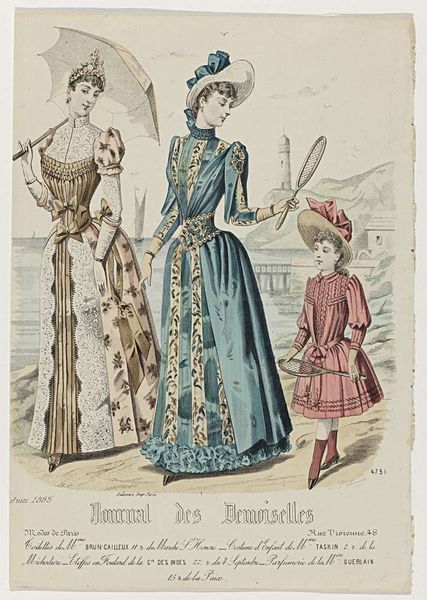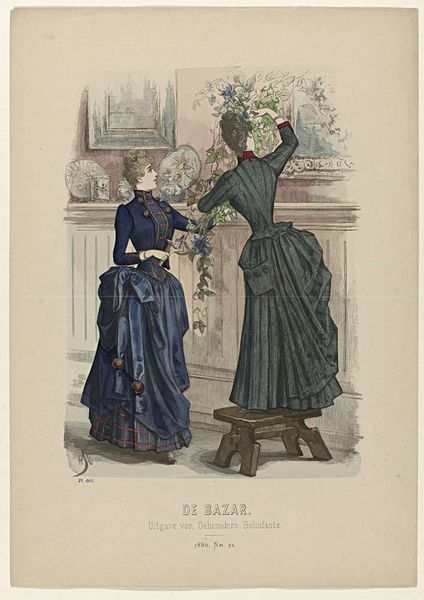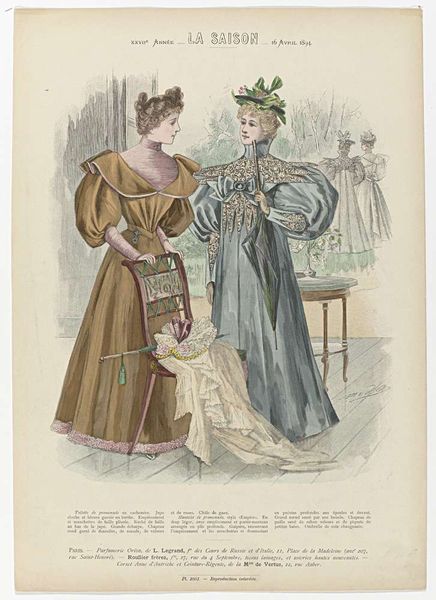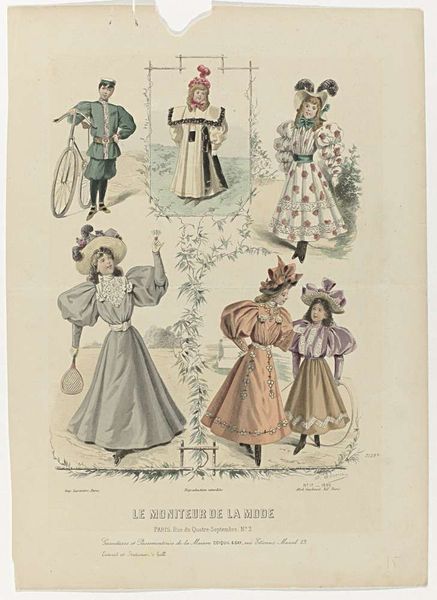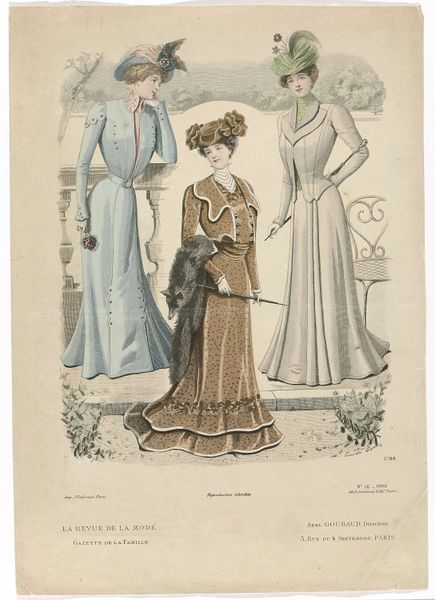
Journal des Dames et des Demoiselles, 4-2-1893, Nr. 2845T : Toilettes de Mme Rhinn (...) 1893
0:00
0:00
drawing, print, etching, paper
#
portrait
#
drawing
#
art-nouveau
# print
#
etching
#
paper
#
dress
Dimensions: height 367 mm, width 271 mm
Copyright: Rijks Museum: Open Domain
Editor: Here we have a print from 1893 by Paul Lacourière, taken from the Journal des Dames et des Demoiselles. It's an etching, featuring three figures in elaborate late-19th-century clothing. I’m immediately struck by the visual emphasis on the women's dresses, particularly the extreme hourglass silhouettes. What significance might these exaggerated shapes carry? Curator: The hourglass figure, achieved through corsetry, wasn't merely about fashion. It was a potent symbol. Think of it: restricting the body while simultaneously amplifying the bust and hips. The etching is almost like an artifact, revealing the period's ideals of feminine beauty and societal expectations surrounding women's roles as decorative figures. What about the child, positioned between the two women, do you feel that is an accident, or could this suggest an allegory of inherited social norms being passed on? Editor: That's a fascinating connection! The child almost looks like a doll, suspended between these two visions of womanhood. Are there any other recurring visual motifs that stand out? Curator: The dresses themselves speak volumes through their details. Consider the ornamentation. The woman in the red dress has embroidery on the skirt and a hat with feathers and plumes. Think of feathers for fleeting time and flightiness. These are all details within details to enhance not just an aesthetic value to being beautiful, but they're about conveying messages through symbolic gestures and objects that would be clear for people to interpret at that period. The ephemeral and delicate nature, possibly reflecting an attitude toward women themselves. Does this imagery echo similar themes you've seen elsewhere? Editor: I see similar motifs in other Art Nouveau works – a fascination with ornamentation and the natural world combined with very clear societal messages. It gives a clearer picture when you put the different pieces into their cultural time period. I learned new perspectives to see with different lenses! Curator: Absolutely. When looking at these things with time you’ll get new perspective. Art constantly has the ability to spark insights and deeper dialogues when these conversations about how objects represent something of history or a population or period through that very artwork, happen.
Comments
No comments
Be the first to comment and join the conversation on the ultimate creative platform.
